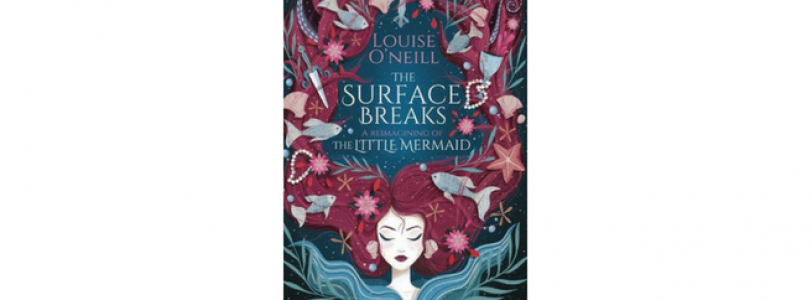You know the story of The Little Mermaid, right? Well, think again.
Louise O’Neill changes everything you thought you knew about this beloved fairytale, in a version far removed from Disney and drawing on the best elements of Hans Christian Anderson’s original tale.
Gaia is our little mermaid, living in a world where mermaids are subservient to mermen and exist only for their spectacle and beauty. Gaia is expected by her fathers and sister to ‘bond’, or in other words, marry. But Gaia is consumed by the mystery of her mother who disappeared when she was a baby and is intrigued by the humans who supposedly took her. On her 15th birthday, when Gaia can finally go up to the surface her curiosity leads to events which will change her world forever and which she cannot undo.
It’s immediately evident that O’Neill has swapped the Disney-lite version of this tale for a dark adaptation. The Little Mermaid not only trades her tail for legs, but in order to do so she has to suffer the pain of walking on knives for every step she takes, and even more grimly, it’s not just her voice which is stolen - her tongue is literally cut out.
Moreover, the Sea Kingdom she lives in is not a beautiful and harmonious place of signing maidens and dancing fish. O’Neill cleverly creates a patriarchal dystopia which reflects the issues of our own society. It’s not until Gaia breaks out of this that she realises it’s not normal or right. The book strikes gold with the addition of the Rusalka – siren-like creatures who are thought to be fallen women from the human world, condemned to the sea to lure men to their deaths. Their very existence is a dark threat to the patriarchal mermen and even the human world. For much of the novel, we see Gaia complicit in demonising the Rusalka, which is evidently a symbol for victim blaming, until she herself realises the oppression and injustice that is done to these women.
There are a few elements of this allegory which are perhaps a bit too straightforward, almost verging on being a bit clumsy. For example, when Gaia mentions the ideal body of a mermaid, and the requirement to be a perfect weight. This reflects many aspects of our own society but is laid out as such an explicit parallel in the novel that it is a sharp jolt from the fantasy world of the mermaids. However, as the genre of the novel is YA and it may appeal to younger teens, it is perhaps necessary to be so explicit to convey these ideas. It also encapsulates more than just feminist ideas but also LGBT themes through some characters, and is a brilliant coming of age novel. By far the best aspect of the book is the ending, which you don’t see coming and which certainly packs a punch. Without giving any spoilers away, it is safe to say that O’Neill blows Anderson’s original dark ending out of the water.
This book is definitely one for lovers of fairy tales, fantasy, and YA in general, but be warned – if you have come looking for a romance between Eric and Ariel and a singing Sebastian you won’t find that here. The Surface Breaks is a feminist fairytale which is not for the faint-hearted.










I need darkness and feminism in my life and this book suits my needs.